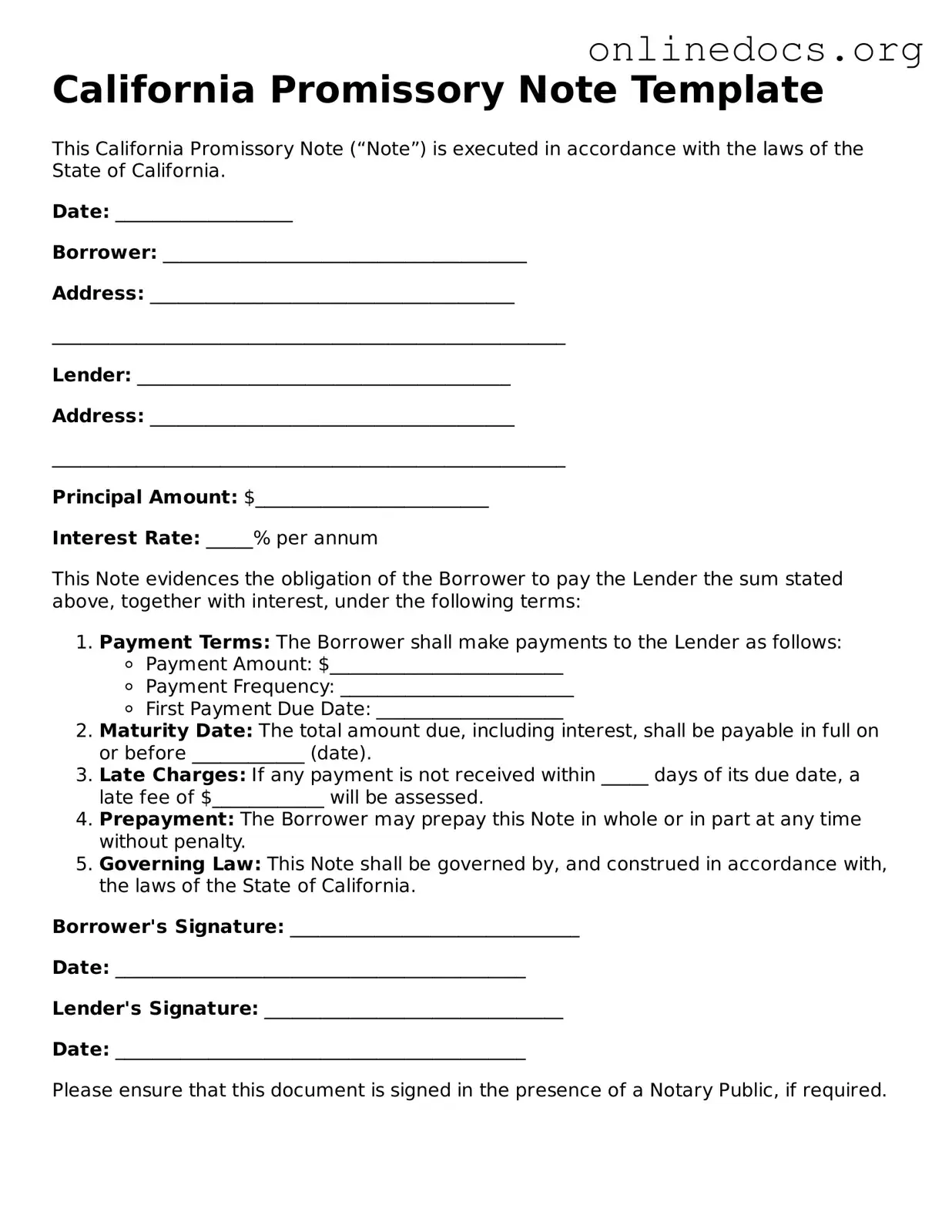The California Promissory Note is similar to a Loan Agreement. Both documents outline the terms under which a borrower receives funds from a lender. A Loan Agreement typically includes details such as the loan amount, interest rate, repayment schedule, and any collateral involved. While a Promissory Note serves as a promise to repay, the Loan Agreement provides a broader context, often including additional clauses that address default, dispute resolution, and other legal considerations.
A Mortgage Note is another document closely related to the California Promissory Note. This specific type of note is used in real estate transactions where the property itself serves as collateral for the loan. Like a Promissory Note, it details the borrower's commitment to repay the borrowed amount. However, the Mortgage Note also includes provisions that specify what happens if the borrower defaults, including the lender's rights to foreclose on the property.
A Secured Promissory Note shares similarities with the California Promissory Note, as both involve a promise to repay a loan. The key difference lies in the security aspect. A Secured Promissory Note is backed by collateral, which can be seized by the lender if the borrower fails to meet repayment obligations. This added layer of security provides the lender with more assurance compared to an unsecured Promissory Note.
An Unsecured Promissory Note is also comparable to the California Promissory Note, but without any collateral backing the loan. Both documents require the borrower to promise repayment, but the Unsecured Promissory Note carries a higher risk for the lender. If the borrower defaults, the lender has limited recourse to recover the funds, making the terms of repayment and interest rates typically more stringent.
A Personal Loan Agreement is similar in that it outlines the terms of a personal loan between two parties. This document specifies the loan amount, interest rate, repayment schedule, and any penalties for late payments. Like the California Promissory Note, it serves as a binding agreement, ensuring that both parties understand their obligations and rights regarding the loan.
In addition to the various financial documents discussed, it's essential to consider legal forms that facilitate ownership transfers, such as the https://californiapdfforms.com/trailer-bill-of-sale-form/, which serves as a critical resource for anyone looking to navigate the complexities of buying or selling a trailer in California.
A Business Loan Agreement also resembles the California Promissory Note in its function to formalize a loan arrangement. This document is used when a business borrows money from a lender, detailing the loan amount, interest rate, repayment terms, and any specific conditions related to the business's financial performance. While both documents serve to confirm the loan, the Business Loan Agreement often includes more complex terms that reflect the operational aspects of the business.
A Student Loan Agreement is another document akin to the California Promissory Note. It outlines the terms under which a student borrows funds to finance their education. This agreement typically includes the loan amount, interest rate, repayment schedule, and provisions for deferment or forgiveness. Like the Promissory Note, it establishes a legal obligation for the borrower to repay the funds, but it often considers the unique circumstances of student borrowers.
A Car Loan Agreement is similar to the California Promissory Note in that it governs the terms of a loan used to purchase a vehicle. This document specifies the loan amount, interest rate, repayment schedule, and the vehicle being financed. Both agreements require the borrower to commit to repaying the loan, but the Car Loan Agreement often includes provisions related to the ownership and use of the vehicle as collateral.
A Credit Agreement is another document that shares characteristics with the California Promissory Note. This agreement outlines the terms under which a lender extends credit to a borrower. It includes details such as the credit limit, interest rates, and repayment terms. While the Promissory Note focuses on a specific loan, the Credit Agreement encompasses a broader range of borrowing options, including revolving credit lines.
Finally, a Lease Agreement can be compared to the California Promissory Note in terms of establishing obligations between parties. While primarily used for rental arrangements, a Lease Agreement outlines the terms of payment for the use of property. Both documents create a binding commitment to fulfill financial obligations, although a Lease Agreement typically involves ongoing payments for the use of an asset rather than a one-time loan.
